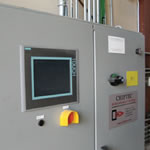Every school design tells a story. These stories can come in the form of energy efficient windows and lighting, or even a digital gauge that displays how much energy the school is using at any given time.

When planning any change in classroom technology, the details can make all the difference. This is especially true for schools installing cloud-based services. Knowing what you’re getting now can save headaches later.
In a world dominated by smartphones and Google, students are relying on a new host of tools to find the answers to some of life’s biggest questions.

Chipping away at energy costs.

Know where to find and how to secure funding beyond what the federal government and state provides.